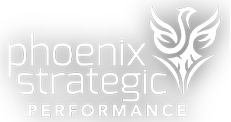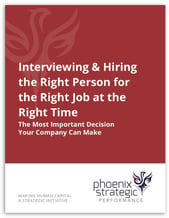What is HR's Business, and How Does it Contribute to the Business?
What is the fundamental role and contribution of HR? The thread of people development within organizations is wrapped around the business fabric. So, what is the golden thread that unites business and people development?
In a series of blogs and online discussions, we will help facilitate and accelerate the delivery of solutions to weave the golden thread of HR into the fabric of the business. Mike Smith and Carolyn Dare from LTSglobal.com and Joanne Flynn from Phoenix Strategic Performance will engage with you to address the themes that underpin the essence of HR.
What are the critical issues that keep business leaders awake at night?
Although executives regularly affirm the importance of their people to overall business success, few companies have in place any systematic way to measure their investment in human capital assets, the return on that investment, and which areas of that investment are most likely to increase overall business performance.
If the business focus were brought to this formerly 'soft' area, then great business results would be achieved from leadership team effectiveness, strategic alignment to the bottom level, clarifying roles post-merger, doubling learning and development returns, lowering strategic risk, optimizing excellence in execution, multiplying star performer behaviors or adding meaning to people's work. So, we are not just talking about financial data!
Recent reports have criticized HR, stating the following:
- "Business leaders and HR…continue to give HR borderline failure/barely passing grades...HR organizations rated their teams the equivalent of a C-minus (an average of 1.65 on a five-point scale), showing almost no improvement over last year's ratings. The score was even lower when we asked business leaders to rate HR. Business leaders rated HR a D-plus (an average of 1.32 on a five-point scale), indicating their increased expectations" Deloitte's Human Capital Report 2015
- "65% of CEOs feel they lack the information they need to increase the return on their investment in human capital."
© PriceWaterhouseCoopers 15th Global CEO Survey of 1,258 business leaders in 60 countries - HR is increasingly becoming the business partner as they are seen to deliver business strategy, align business objectives, and demonstrate their impact on the bottom line. However, large numbers still need clarity on how their role, or the role of HR, fits in the organization. Dr A Hesketh, Lancaster University.
- "The three biggest challenges facing HR: Measuring HR programs in financial terms: 35%, delivering workforce metrics and analytics: 26% and driving internal mobility and career development: 24%"; Harris, Stacey. The High-Impact HR Organization: Top 10 Best Practices on the Road to Excellence. Bersin & Associates. 2011.
- A report by the CIPD entitled "Real-life leaders: closing the knowing-doing gap" commented on a study of nearly 2,500 leaders and managers in the UK stated, "Our research shows that organizations might be unwittingly setting their leaders up for failure by not aligning the systems and structures to the behaviors they expect of leaders. ….. Although HR professionals appear to have been focusing on advocating for and delivering leadership capability development, there is no evidence that the HR function assumes the role of strategic adviser."
When aligned to business performance, people might feel genuinely supported, appreciated, and valued—they might feel like they are helping shape the business's success. And when that happens, imagine how the company would grow.
In a wide-ranging study of employee motivation, Harvard Business School professor Teresa Amabile and psychologist Steven Kramer asked 600 managers what they thought was the most important motivator for employees at work. A shocking 95% of them got the answer wrong.
It's not money, safety, security, or pressure that drives employees to work. It's not the supposedly foundational needs in Maslow's hierarchy.
The most important motivator for employees at work is what Amabile and Kramer call "the power of small wins ": employees are highly productive and driven to do their best work when they feel they're making progress every day toward a meaningful goal.
Engagement and involvement do not guarantee that people have meaning in their work. Creating Empowered Achievers is essential to business success.
Mike Smith is the Director of Learning Transfer Solutions Global. He is passionate about ensuring that individuals become empowered achievers, that HR has a strategic role in executive teams, and that businesses gain alignment and fast execution of their business strategies. His current company, LTSGlobal, is dedicated to giving companies, trainers, and consultants help to enable them to activate new learning. He can be reached at mike.smith@ltsglobal.com
Carolyn Dare is a Partner with Learning Transfer Solutions Global, a consulting firm that works in a systemic way to lead and anchor large-scale change, transformation, and performance enhancement initiatives in organisations. She is an accomplished virtual community designer, online facilitator, and website/online simulation developer. She can be reached at carolyn.dare@ltsglobal.com




